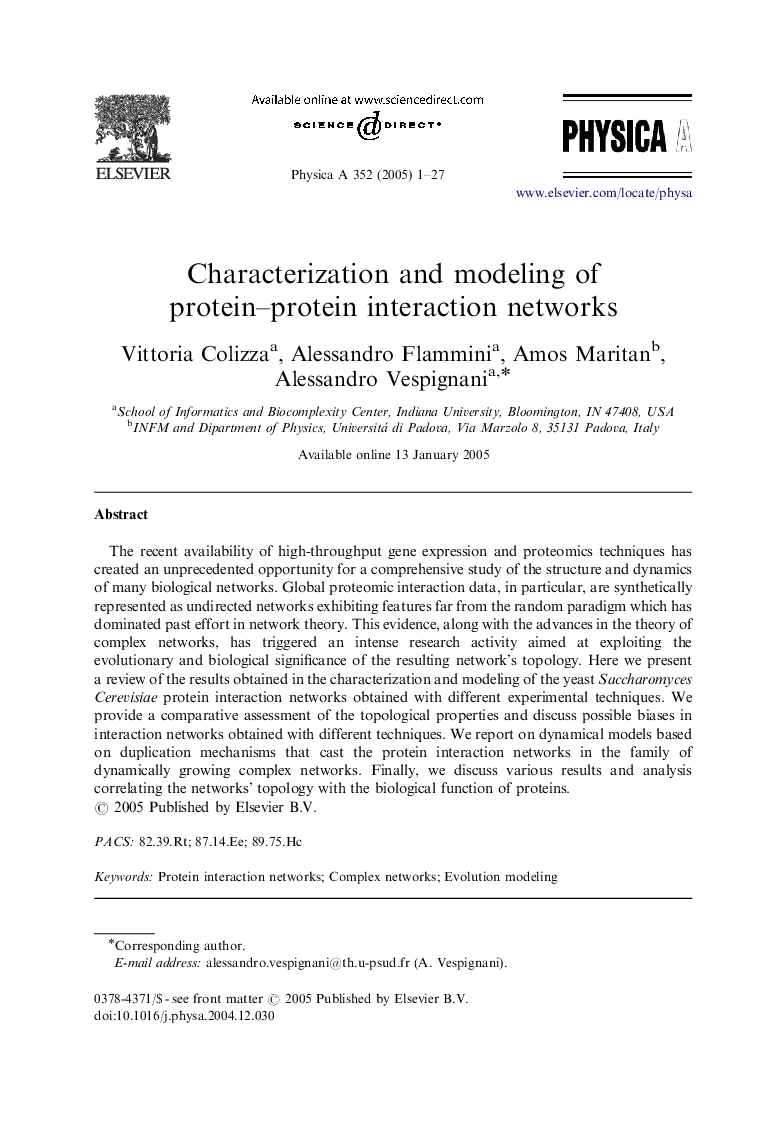| Article ID | Journal | Published Year | Pages | File Type |
|---|---|---|---|---|
| 10481725 | Physica A: Statistical Mechanics and its Applications | 2005 | 27 Pages |
Abstract
The recent availability of high-throughput gene expression and proteomics techniques has created an unprecedented opportunity for a comprehensive study of the structure and dynamics of many biological networks. Global proteomic interaction data, in particular, are synthetically represented as undirected networks exhibiting features far from the random paradigm which has dominated past effort in network theory. This evidence, along with the advances in the theory of complex networks, has triggered an intense research activity aimed at exploiting the evolutionary and biological significance of the resulting network's topology. Here we present a review of the results obtained in the characterization and modeling of the yeast Saccharomyces Cerevisiae protein interaction networks obtained with different experimental techniques. We provide a comparative assessment of the topological properties and discuss possible biases in interaction networks obtained with different techniques. We report on dynamical models based on duplication mechanisms that cast the protein interaction networks in the family of dynamically growing complex networks. Finally, we discuss various results and analysis correlating the networks' topology with the biological function of proteins.
Related Topics
Physical Sciences and Engineering
Mathematics
Mathematical Physics
Authors
Vittoria Colizza, Alessandro Flammini, Amos Maritan, Alessandro Vespignani,
